Story – Christopher Hector
Photos – Roslyn Neave
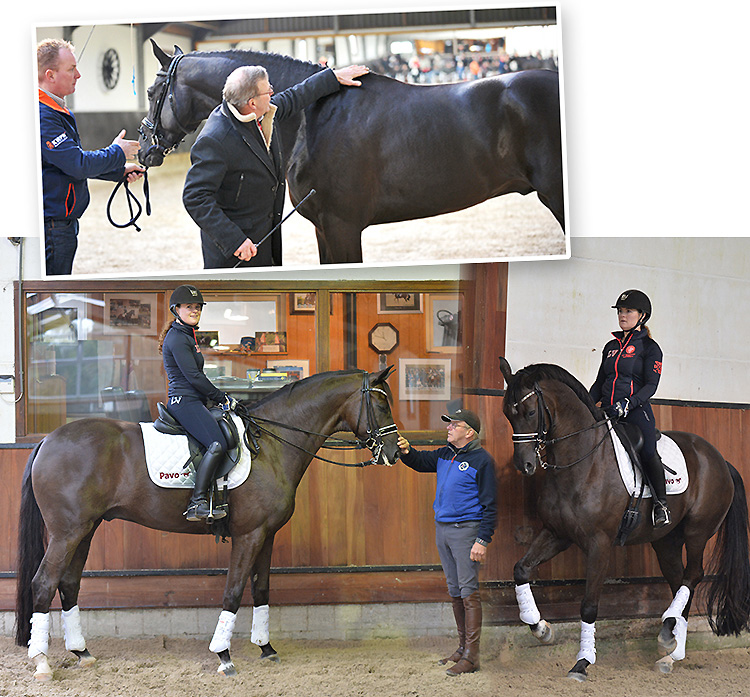
This is a unique journey, something I’ve never be privileged to see before, the chance to watch a talented trainer and a superb rider transform a just turned three-year-old colt into a dressage athlete, capable of winning his first ever Grand Prix. It’s the story of Jennifer Sekreve, Johan Hamminga and San Siro, a story I want to share…
It was a great day when we first met up with Johan and Jen back in 2012. We were on the KWPN visitors’ tour that is organized at the conclusion of every annual stallion show, and as soon as Johan started to explain the connections between conformation and dressage ability, we knew we were in the presence of someone very special.
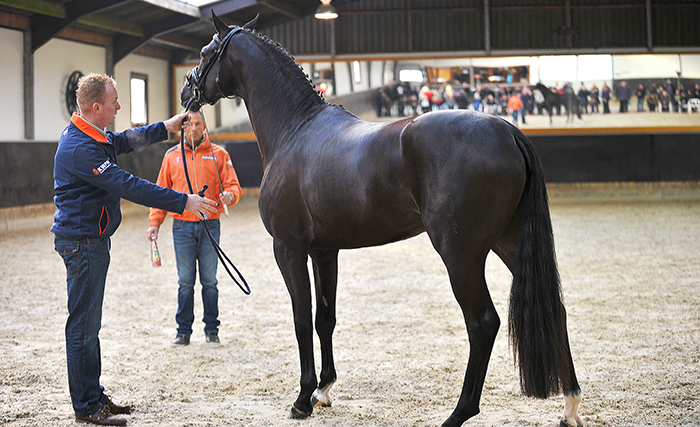
Our subject, San Siro was the first horse brought into Johan’s indoor school at Elspeet in The Netherlands, a German-bred colt – by San Amour, out of a De Niro/Andiamo/Argentinus mare.
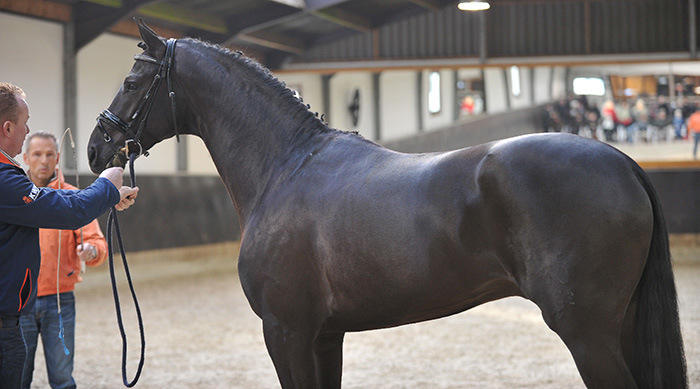
Johan assessed the horse for us:
“I bought him in a foal auction in Germany. I liked the bloodlines, but also the topline connection – from the wither, to the back, to the loins, to the croup.
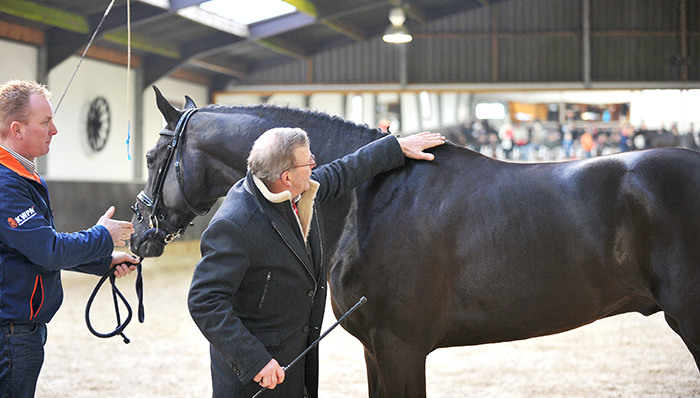
His negative point is his neck, it is long enough, but it could be more up from the wither and be cleaner on the bottom of the neck.
“The most important thing to look for is a body in good proportion, with an uphill tendency and connected from the front to the back. One of his problems is that he is so big. He is 173 cm and he grew three or four centimetres last month. That takes a lot out of them.”
Of course we didn’t see Johan’s partner, Jennifer, ride the San Siro that time, but she rode three horses, enough to see that she is one of those exceptionally tactful talented riders, totally at one with the horse.
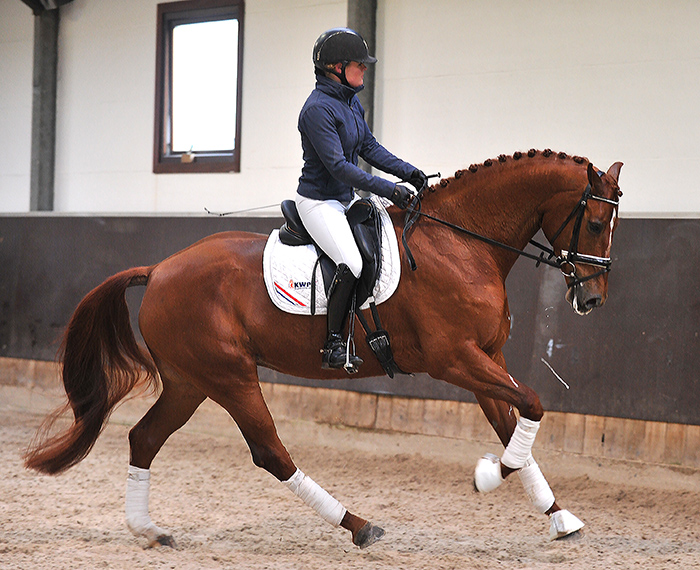
Jen demonstrates for Johan on a Damon Hill mare
“The balance of the horse is really the most important thing. The horse must be in a good shape. What we need to be aiming for in our breeding program is a horse with a good hind end, a horse that is strong and capable of bending behind. It all comes from the power and activity behind, the front doesn’t matter, steady on the bit, doesn’t matter – when the horse is in balance, the front and the contact, will come.”
And we’ll see that getting this lanky kid strong enough to handle the demands of dressage was the ongoing challenge…
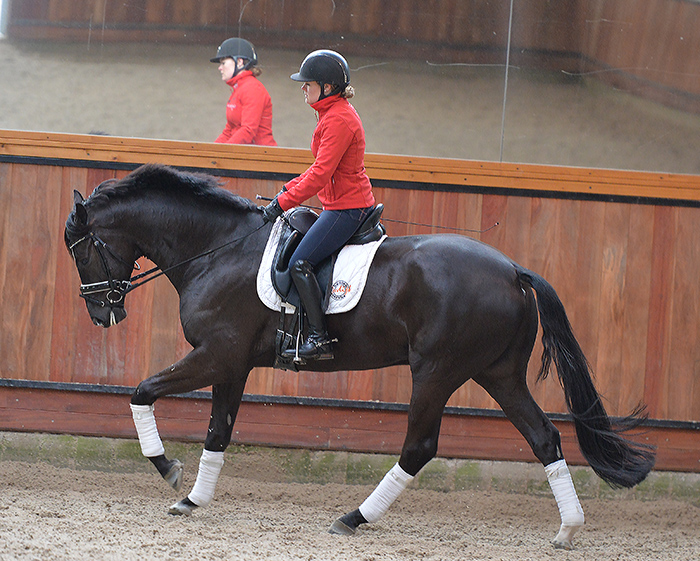
The next time we met them, San Siro was under saddle, and we watched Jennifer work him while Johann was teaching another rider. Jennifer is a photographer’s joy – no waiting for the right moment, even corrections are examples of how it should be done.
story continues below the advertisement
Later, I asked Jennifer about her warm up, with some very angled leg yields…
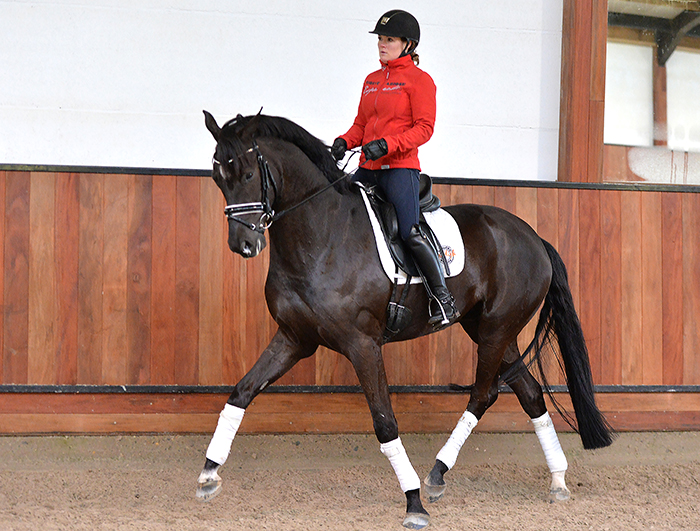
“It is difficult for him to give his body – he does everything, but it is as if he is holding his breath. I make him a little quicker, do walk trot transitions, push him a little sideways, push him to use his body more, then after I have a different horse.”
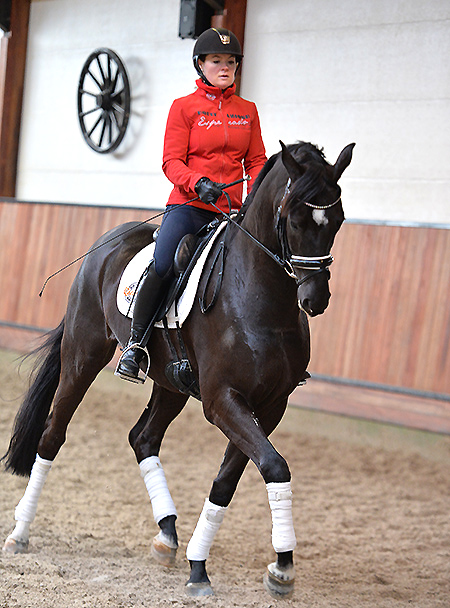
“He is maybe not the most spectacular in the movements, but I think he is going to learn all the work because he is really smart.”
You were doing almost the beginning of working canter pirouettes with him?
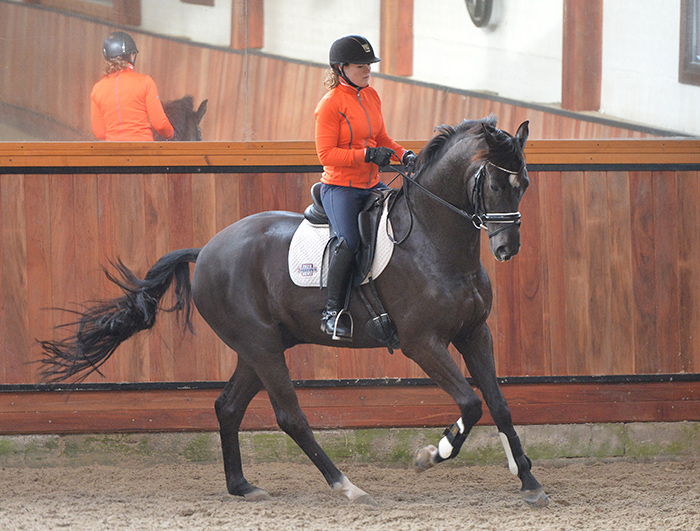
“For his age, he doesn’t have to do this at all, but I also use that exercise to get him to use his body, because otherwise he holds himself. So I have to collect him more so he has to bend the hind legs, touch on using the muscles of the back, touch on using the muscles in the body, so he starts to give.”
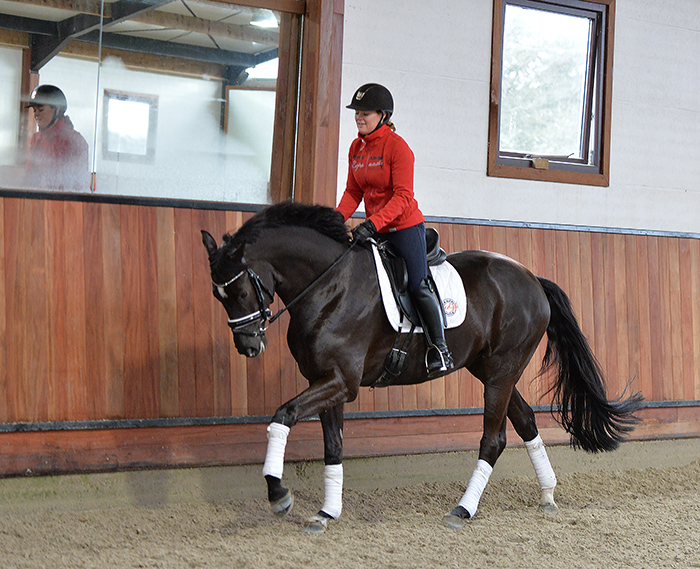
“You need him to relax and give his body, stretch his neck and stretch his body, but he does it in his own time, so I have to collect him, push him sideways, ask something from him and then get the relaxation out of that.”
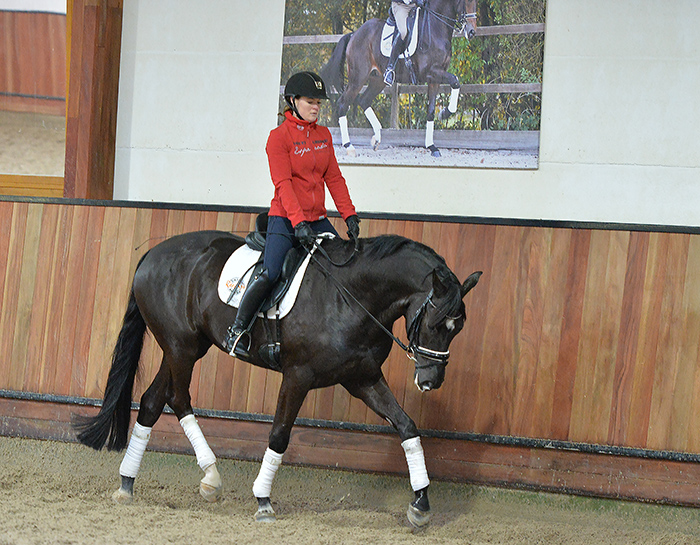
“I always give him a break and a stretch in between, because he is still very young. He learns so well, I ask him, but then let him relax so he likes it.”
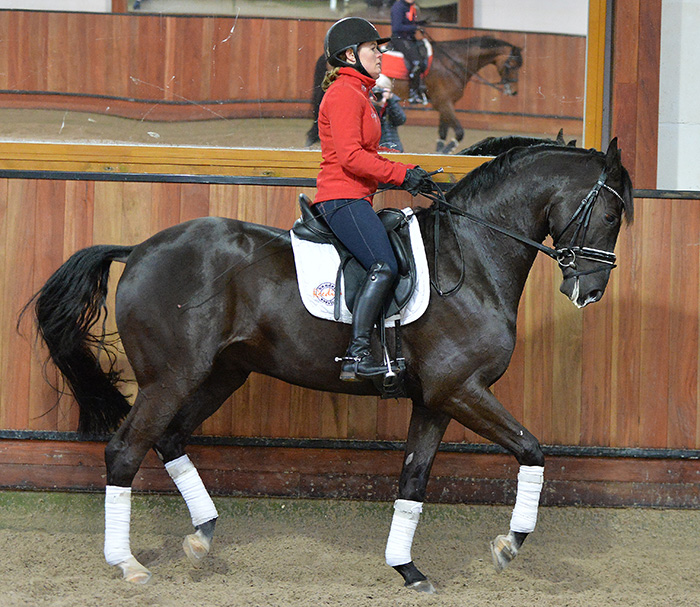
In the trot work you were almost doing half steps?
“Exactly. He is a little bit high behind, so I ask him every time in the training to bend his hindquarters underneath him, then I get more movement through the body and more suppleness. He doesn’t have to do half steps, but he does them as if they were nothing. He understands, and thinks okay, I can do it. He is a really nice horse to ride. I also take him out for rides in the countryside.”
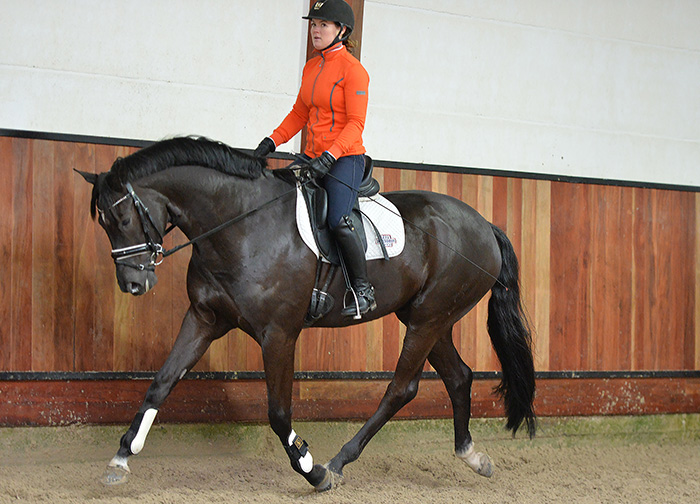
story continues below the advertisement
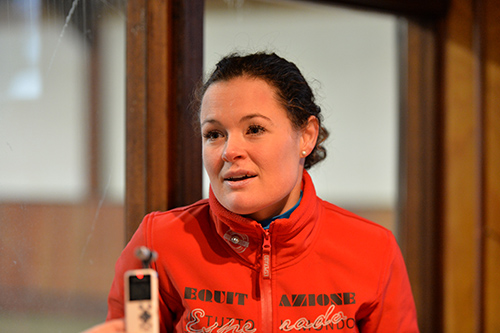
Along the way, Jennifer and Johan became good friends of ours and we learnt more about them. We learnt that Jen started out a big city girl, with her parents musicians in the most famous orchestra in the world, the Concertgebouw, everything was fine with Jennifer headed for a musical career until they picked the wrong (right?) babysitter for their daughter…
Jen is laughing at the memory of being taken to the Amsterdam stables by her baby sitter: “Yes, we lived close to the concert hall in the middle of the city. I actually did two operas – with school I did a lot of singing, so we could audition for the opera as children. I did two, it was really great fun, but then it was only horses, horses, horses.”
“I was eight or nine when I found horses. I was riding once a week for a while, in a lesson on ponies. The first year I was really afraid, I was riding on the oldest pony. It was really cool and easy, and a girl had to lead him the whole lesson, and trot with me, because I was really afraid – then all of a sudden, one time the girl said, next week I cannot come, but then I did it on my own and all of a sudden, I was like, I’d like to ride that horse, the quick or really naughty pony… now I want to do that one. After a year I was riding all the ponies.”
When did you quit school and go with horses full time?
“When I was sixteen, I thought okay I don’t have to go to school any more, and I never went back. I was 24 hours a day doing the horses. I was riding horses for people in Amsterdam, out near the airport. When I was sixteen I went to work with Egbert Kraak, he was a dressage dealer, really high quality horses. I wanted to go there because I wanted to learn a lot. Actually when I came there, I was just the pony girl, I didn’t know anything, but I was there for two and a half years, and I really worked and rode some fantastic horses, and learned a whole lot. That was the beginning.”
“Then I started going to the Equestrian School in Ermlo once a week, and after I finished the school, I worked by myself for a while, training horses and teaching seven days a week. I was having lessons with Johan, and he asked me, ‘why don’t you come and help here’. I started here and liked it really a lot, now I am full time here, riding most of the time, and giving a few lessons. I came here in 2002.
ONE YEAR LATER…
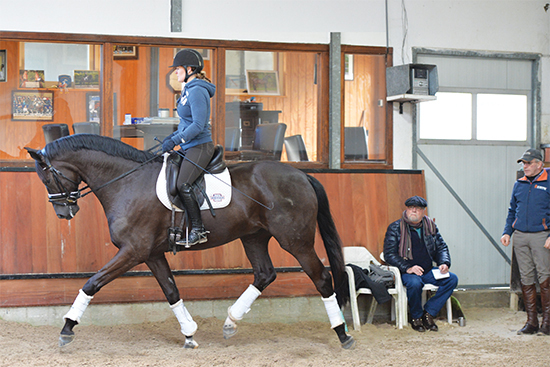
The next time we saw the horse he was a five-year-old. It’s a nice engaged trot, forward into the contact, the rider’s hands a little wider this time, but just as still. The horse looks a real De Niro, a trifle bored with this lower level stuff, waiting for the hard bits to show what he can do.

“What is important is always to leave the door open,” says Johan, “When you pull the reins, you close the front door, but the horse needs an escape – put his neck a little longer, and a bit lower, and then he can go forward and open that front door.”
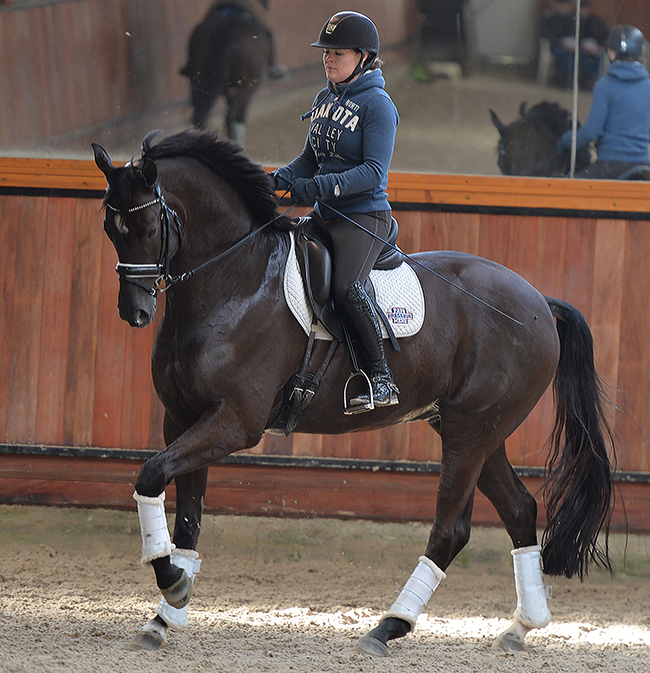
Again Johan relates this to what is happening at the hind end: “Before he was not strong enough behind, he was too wide, searching for his balance, then it is very difficult for a horse to come right in his neck position and make a steady contact. Now he is more closed behind, more bending from behind, now the neck and contact are better.”
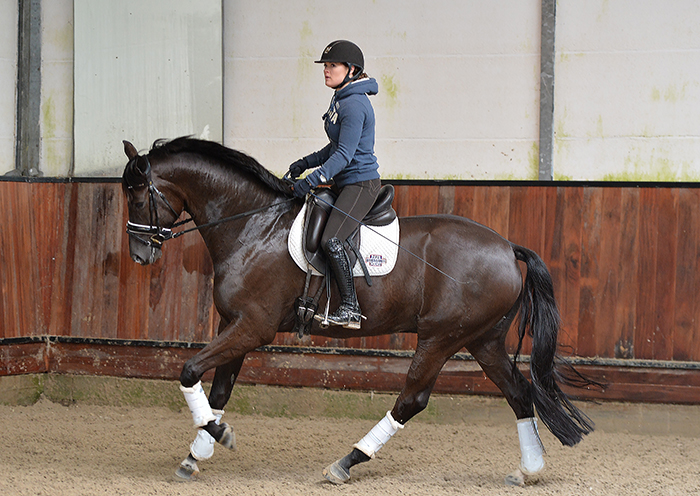
“This is San Siro in canter. In this canter moment, note the distance between the right and the left hind leg, his left hind leg is coming under the body as far as possible and in this moment if you take a vertical line through the ear, shoulder, hip from Jennifer, and the horse’s fetlock, you see the left hind leg is on that vertical line, you see also why it is possible for his left hind leg to come so far, because his neck is coming out of his wither forwards, so he can stretch the neck, and that is the reason the inside hind leg is coming so far under the body, and that gives him so much balance. Good contact between Jennifer and the horse, both reins the same soft contact, in her hands and arms, there is not a lot of power, he is soft. When the horse is in balance, he is always soft on your reins.”
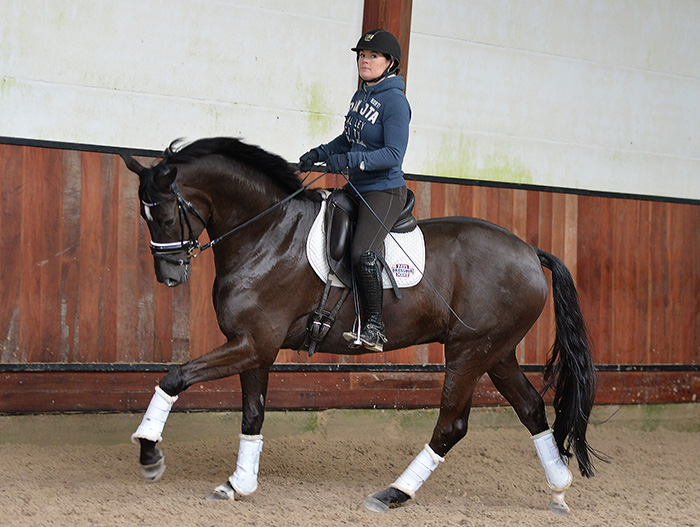
In our next episode we will continue to follow the career of the young San Siro, and share more of Johan’s training techniques…

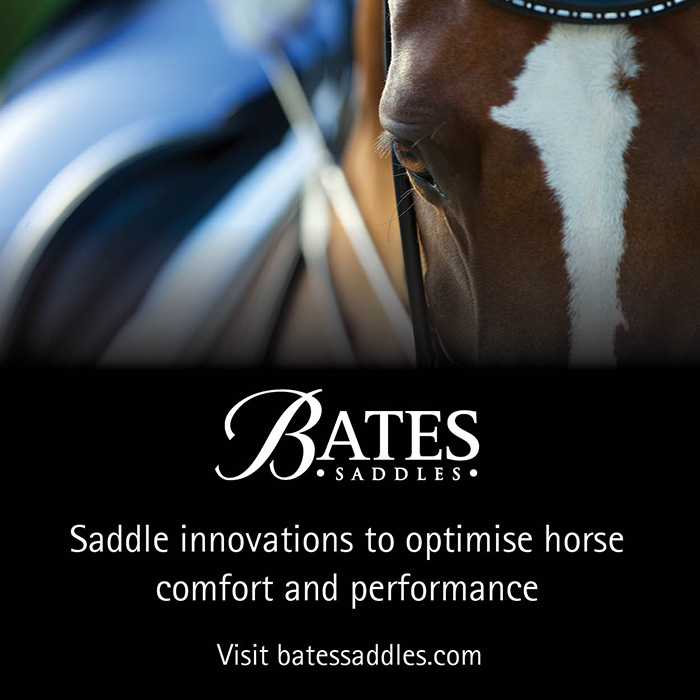
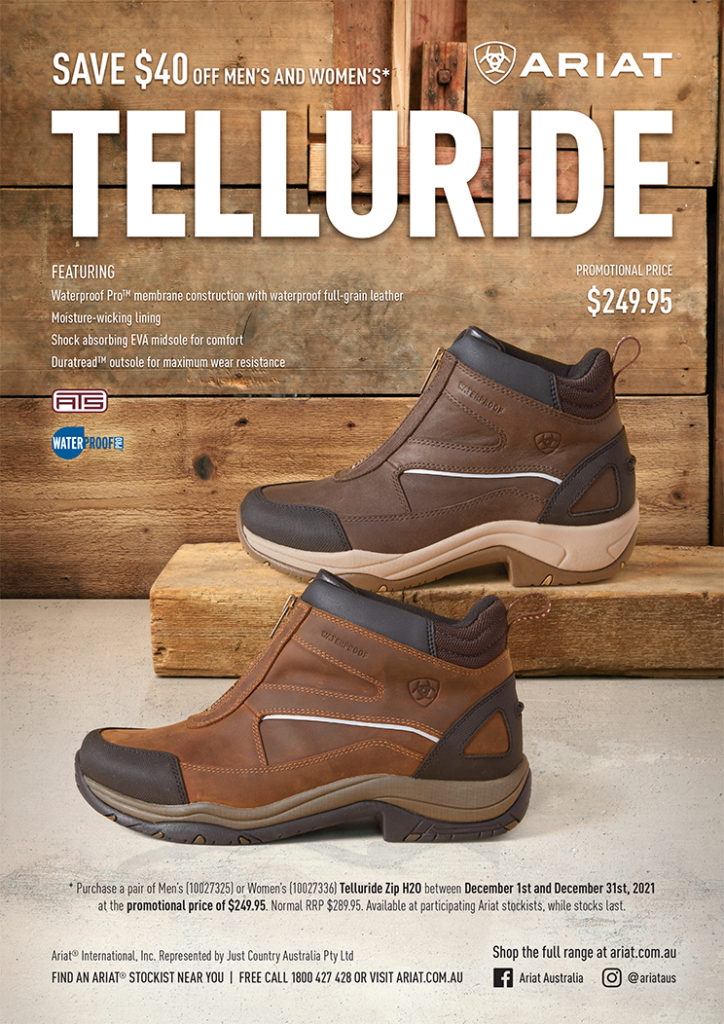
Fabulous that you have followed a horse from 3yo to Grand Prix. Looking forward to the next addition.
The comment about the vertical line in the photo of Jennifer in canter is a little misleading. Instead of the hock being on the vertical line from the riders’s ear, hip it is the fetlock joint that is on the line, not the hock. However it is a brilliant picture and a comment.